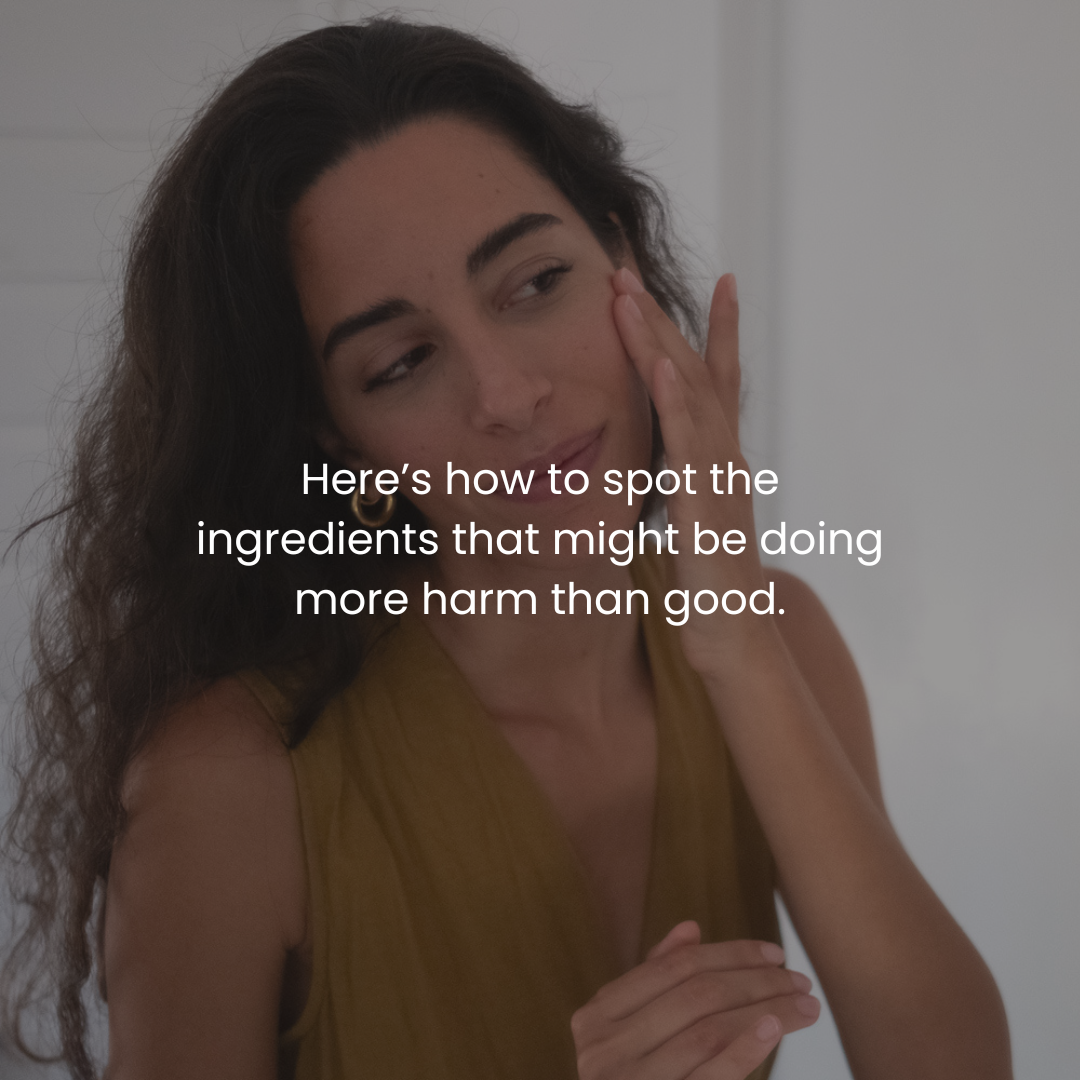When I started Pure Earth, it came from a simple but powerful desire — to create products that are truly healthy for both people and the planet.
But what I quickly learned — and what still breaks my heart — is how many so-called “natural” or “eco” products on the market aren’t as clean as they claim to be. Clever packaging and loose regulations can make harmful products look green and trustworthy. And most consumers, trying to do the right thing, are unknowingly being misled.
It’s not their fault. The system is flawed.
To this day, I still come across ingredient labels from major “natural” brands that contain known irritants, hormone disruptors, or chemicals on international watch lists. That’s why education matters. Because once you know what to look for, you start to see through the marketing — and you can make better choices.
Here are five of the most common toxic ingredients that still show up in “green” products, and why I’ll never include them in anything we make at Pure Earth.
1. Phthalates
Where they’re found: Fragranced products like perfumes, body sprays, shampoos, lotions, candles, and air fresheners.
Why they’re used: Phthalates are added to help synthetic fragrances last longer — they give that strong, lingering scent you can smell hours after use.
The problem: Phthalates are known endocrine disruptors, meaning they interfere with hormone balance. They’ve been linked to fertility issues, developmental problems in children, and even increased risk of certain cancers. Several are on official watchlists for potential human carcinogens.
The worst part? They often hide behind the word “fragrance” on a label. That one word can represent a cocktail of unlisted, potentially harmful chemicals — phthalates included.
2. SLS (Sodium Lauryl Sulfate)
Where they’re found: Shampoos, face cleansers, hand soaps, body washes, toothpaste, and even some “natural” household cleaners.
Why they’re used: SLS is a foaming agent. It gives that satisfying lather that we associate with “clean.”
The problem: SLS is a known skin irritant, especially for those with sensitive skin or conditions like eczema. It strips away the skin’s protective oils, damaging the skin barrier and worsening inflammation.
It’s also frequently contaminated with 1,4-dioxane, a probable human carcinogen.
And it’s not just bad for us — SLS contributes to water pollution and is harmful to aquatic life once it enters waterways.
3. Methylisothiazolinone (MI)
Where it’s found: Moisturisers, face creams, hair care products, baby wipes, and even some cleaning sprays.
Why it’s used: It’s a preservative that prevents the growth of bacteria in water-based products.
The problem: MI has been linked to severe allergic reactions, including rashes, swelling, and dermatitis. In Europe, a major outbreak of skin reactions led to calls for a full ban in leave-on products. Some countries have restricted its use — others haven’t.
Despite all the warnings, I still see it in everyday personal care products. It has no place in products that claim to care for your skin.
4. Methylchloroisothiazolinone (MCI)
Where it’s found: Often used alongside MI in shampoos, conditioners, lotions, and even “natural” baby products.
Why they’re used: MCI extends shelf life by killing bacteria and mold.
The problem: MCI is a high-risk skin sensitizer — especially for children. Canada banned it in all leave-on products and any children’s products back in 2016. That alone should tell us something.
But in many countries, including Australia, it’s still widely used. If governments that prioritize health are banning it, it raises the question: why is it still allowed elsewhere?
5. Polyethylene Glycol (PEGs)
Where they’re found: Moisturisers, conditioners, sunscreens, and other products that are designed to absorb into the skin.
Why they’re used: PEGs help other ingredients penetrate the skin more deeply.
The problem: PEGs are often contaminated with ethylene oxide and 1,4-dioxane, both of which are listed as probable human carcinogens. And because PEGs enhance absorption, they may help carry those harmful substances deeper into your body.
This is not what anyone wants when they’re trying to hydrate or nourish their skin.
6. Synthetic Fragrance (Parfum)
Where it’s found: Literally everywhere — shampoos, lotions, makeup, candles, laundry detergent, deodorants, and even some baby products.
Why it’s used: To add scent and create a “signature” smell that customers associate with the product or brand.
The problem: “Fragrance” or “parfum” on an ingredient label is a loophole. Brands don’t have to disclose what’s in it — and that one word can hide dozens of chemicals, including phthalates, allergens, and potential carcinogens.
Synthetic fragrances are a major trigger for headaches, asthma, skin reactions, and hormone disruption — and yet, they’re still incredibly common in personal care and household products.
At Pure Earth, we only use pure, plant-based essential oils and disclose exactly what’s in every product. Because transparency matters.
7. BHT (Butylated Hydroxytoluene)
Where it’s found: Lip balms, moisturisers, makeup, and other products with oils and fats (also found in some processed foods).
Why it’s used: BHT is a preservative and antioxidant that prevents oils from going rancid, extending the shelf life of the product.
The problem: BHT is a suspected endocrine disruptor and has been linked to organ toxicity and tumour promotion in lab studies. It’s also on the environmental hazard list due to its toxicity to aquatic life.
Some countries (like Japan) have restricted BHT in cosmetics, but it’s still widely used elsewhere — even in products labelled as “natural.”
Why It Matters to Me
When I created Pure Earth, I didn’t want to make “green products that look good on a shelf.” I wanted to create truly safe, honest products that stand up to scrutiny. Products that I would use on my own children. Products that contribute to a healthier planet — not just a healthier bathroom shelf.
The reality is, most of us just want to make better choices. We care. We try. But unless you’re trained to decode complex ingredient names or chemical regulations, it’s hard to know what to trust.
That’s why I believe in radical transparency. In helping people understand what’s actually in their products — and in creating alternatives that are clean, simple, and safe.
You Deserve Better
If there’s one thing I’ve learned, it’s that once you know better, you do better. And you don’t have to be perfect to start. Just stay curious, read labels, and support brands that value people and the planet over profit.
Because you deserve products that are as honest as your intention to live well.
Thank you for being part of the journey.
With care,
Gabriela
Founder, Pure Earth

